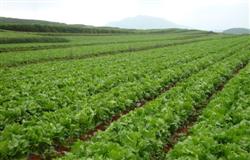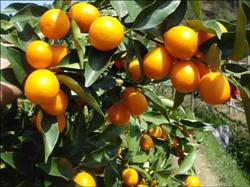Why should we emphasize the combined application of chemical fertilizer and organic fertilizer?

The combined application of chemical fertilizer and organic fertilizer is a scientific decision of fertilization. This is determined by the nature and characteristics of organic and chemical fertilizers. According to the characteristics of organic fertilizer and chemical fertilizer, the comparative analysis is as follows: (1) most high-quality organic fertilizers contain a lot of organic matter, and the perennial application of high-quality organic fertilizers can not only increase the content of soil organic matter. and can constantly update the soil organic matter, so that the physical and chemical properties of the soil can be improved, so it has obvious soil improvement effect: chemical fertilizer does not contain organic matter. Generally, there is no direct effect of soil improvement. This shows that organic fertilizer is the basic material for the construction of high and stable yield farmland. (2) there are many kinds of organic fertilizer and contain all kinds of nutrients, which are often called complete fertilizer, but the nutrient content of organic fertilizer is very low, about 1000 kilograms of high-quality barnyard manure contains only 5 kilograms of nitrogen (N). For example, 100kg urea contains 46 kilograms of nitrogen, which is 92 times that of barnyard manure according to 1000 kilograms of nitrogen. However, the disadvantage of chemical fertilizer is that it contains a single variety of nutrients. Take urea for example, it only contains nitrogen in the three elements of nitrogen, phosphorus and potassium, but does not contain phosphorus and potassium, while calcium superphosphate contains only phosphorus, no nitrogen and potassium, so it can not meet the needs of crops alone. (3) most of the nutrients in organic fertilizers are organic, which need to be continuously decomposed by soil microorganisms before they can be transformed into nutrients that can be absorbed and utilized by crops, so the fertilizer effect of organic fertilizers is slow, but lasts for a long time, and has aftereffect; the nutrients contained in most chemical fertilizers are water-soluble and can be absorbed and utilized directly by crops. Therefore, the fertilizer effect of chemical fertilizer is rapid and effective, and it can provide more nutrients when crops need nutrients most, but its fertilizer effect is short and can not last. Thus it can be seen that the rational application of chemical fertilizer is the material guarantee to increase crop yield per unit area. (4) Organic fertilizer needs to be decomposed and transformed in order to release nutrients for crop absorption, so the utilization rate of organic fertilizer is not high in this season. For example, the nitrogen utilization rate of mature organic fertilizer is only 20% to 30%, but it has less nutrient loss during decomposition and takes a long time to supply fertilizer; while the nutrient content in chemical fertilizer is high, and most of them are available nutrients. It is easy to lose through volatilization, leaching (especially nitrogen fertilizer) and other ways, resulting in low fertilizer utilization in the current season. For example, the utilization rate of nitrogen fertilizer is generally about 35%, phosphate fertilizer is about 10% to 25%, and potash fertilizer is more than 40%. Through the comparison of the two, it is not difficult to see that organic fertilizers and chemical fertilizers have their own advantages and disadvantages, and some advantages of organic fertilizers are the disadvantages of chemical fertilizers, while some advantages of chemical fertilizers are the disadvantages of organic fertilizers. Therefore, the combined application of the two can learn from each other and give full play to their respective characteristics. This is the necessity and scientific truth of the combination of the two.
- Prev

Composting and application of organic fertilizer
The application of organic fertilizer in vegetable production can not only achieve the purpose of continuously supplying a variety of nutrients in the root layer of crops, but also gradually improve the organic matter and buffering capacity of vegetable soil, and reduce the important role of soil-borne diseases and continuous cropping obstacles. Therefore, vegetable production has always attached importance to the application of organic fertilizer. But.
- Next

Types of organic fertilizers commonly used in fruit tree production
Organic fertilizer, also known as farm fertilizer, is commonly used in fruit production, such as compost, ring manure, stable manure, green manure, cake fertilizer, river mud, poultry manure, human feces and urine, soil manure and so on. Most organic fertilizers need to be decomposed by microorganisms before they can be absorbed by the plant roots, so they are also called "delayed fertilizers" and can be used as base fertilizers.
Related
- Fuxing push coffee new agricultural production and marketing class: lack of small-scale processing plants
- Jujube rice field leisure farm deep ploughing Yilan for five years to create a space for organic food and play
- Nongyu Farm-A trial of organic papaya for brave women with advanced technology
- Four points for attention in the prevention and control of diseases and insect pests of edible fungi
- How to add nutrient solution to Edible Fungi
- Is there any good way to control edible fungus mites?
- Open Inoculation Technology of Edible Fungi
- Is there any clever way to use fertilizer for edible fungus in winter?
- What agents are used to kill the pathogens of edible fungi in the mushroom shed?
- Rapid drying of Edible Fungi

